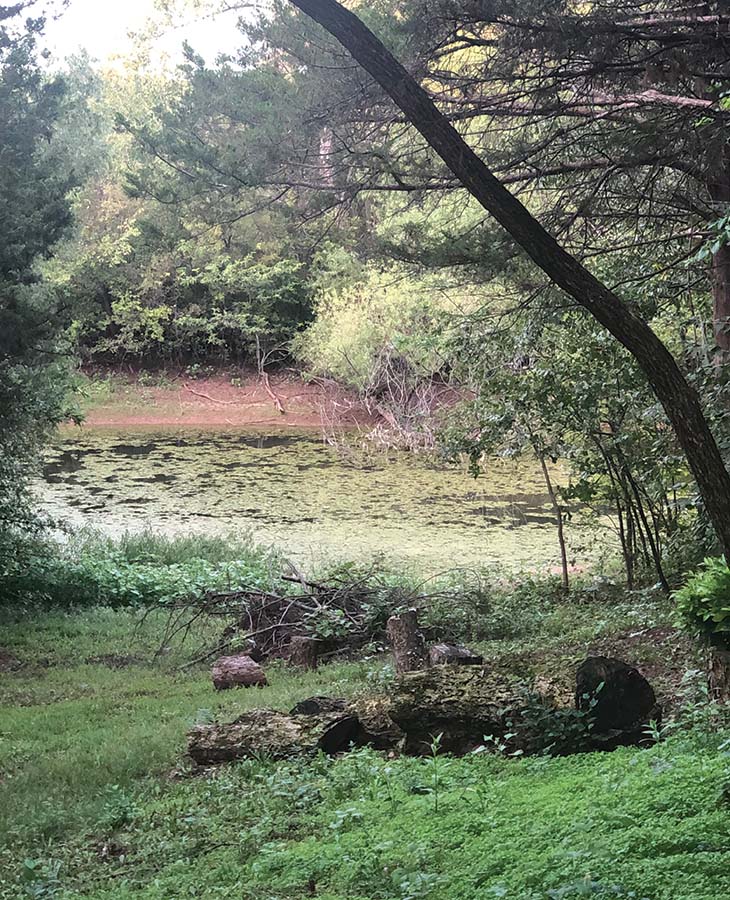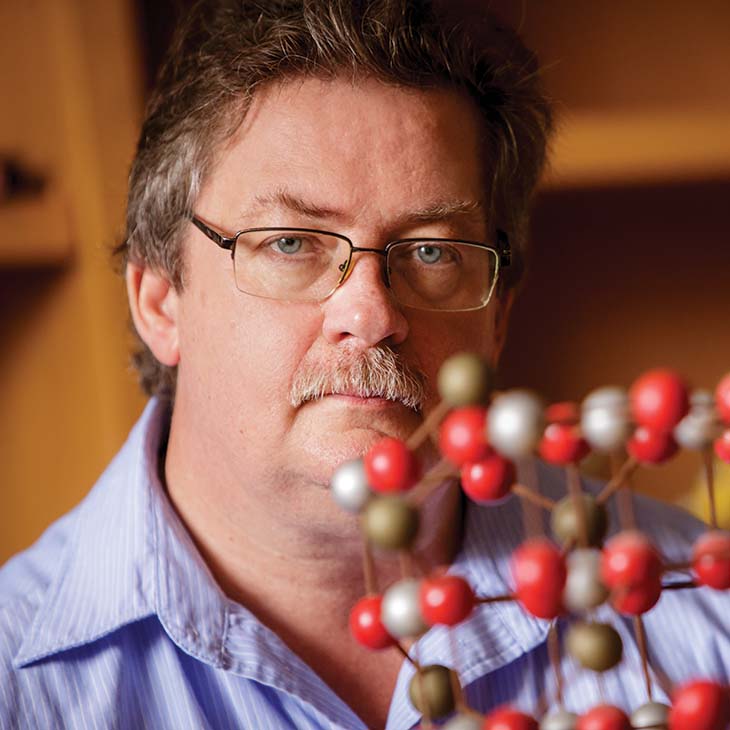
Researchers aim to prevent harmful algae blooms
Friday, September 17, 2021
Media Contact: Harrison Hill | Research Communications Specialist | 405-744-5827 | harrison.c.hill@Okstate.edu
Harmful algal blooms are a growing problem in water across the nation, but OSU researchers may have one piece of the solution thanks to groundbreaking research and new funding.
A pair of researchers are focusing on developing novel materials that could prevent the growth of algae blooms and recycle the nutrients, creating an environmentally friendly cycle.
“The objective of the research is to develop a novel technology for sustainably and economically preventing harmful algal blooms in farm watering ponds,” said Dr. Allen Apblett, a professor in the OSU department of chemistry. The research is focused on algae in waterways affected by fertilizer runoff.
Some fertilizers wash off fields and into farm ponds and waterways, which then feeds algae, creating harmful algal blooms. Algal blooms can create dangerous toxins.
“People don’t really understand what causes them to actually start producing the toxins,” Apblett said. “But the easiest thing is, if you don’t let them bloom, then they don’t grow, then they don’t produce the toxin.
“We already know what causes algae, and that is food. So, the goal is to have a practical
solution [to prevent feeding the algae].”
For plants, food comes mainly in the form of nitrogen, phosphorus and potassium. Too
little nitrogen and phosphorus will limit the growth of plants.
The solution, the team hopes, will come in the form of a granular substance, designed to absorb nitrogen and phosphorus.
“As we identify ponds that are prone to overgrowth of algae, what we plan to do is remove the nutrients that algae need to grow and load them into a material that essentially then becomes fertilizer,” Apblett said. “So rather than fertilizing algae, we’re going to fertilize crops for people and animals to eat and leave our water pristine.”
Reclaiming those lost nutrients from fertilizer runoff also means less fertilizer will need to be produced.
“If we can capture lost nutrients and … recycle them, then we can cut down on the deleterious impact that we’re having on the environment just to procure fertilizer,” Apblett said. “Without [fertilizer enhancing crop yields], we’d have to look around and figure out what small percentage of humans is going to survive because, without fertilizer to produce food, we can’t maintain our population.”
The material is essentially porous granules that bind with nutrients. Once the material is loaded with nutrients, it can be dried and applied to lawns and crops.
“The way to treat a pond would be to run water through columns [containing these materials], although we have a trough-based system that was designed by a local company in collaboration with OSU,” Apblett said.
Once the water has run through these systems, purified water would go back in the pond and all the nutrients would remain in the columns or troughs, where they can be used again to grow crops, Apblett said.
“We’ve also recently demonstrated that the presence of these [materials on a field], even after they delivered the nitrate and phosphorus will prevent fertilizer runoff,” Apblett said. “So, if somebody applies a soluble fertilizer, they’ll capture those nutrients again and release them slowly.”


This project is being funded by a 2020 grant from the U.S. Environmental Protection Agency to research how to prevent and control algal blooms. As one of seven awarded this grant, the team’s research is unique.
“A lot of people take different approaches [to treating algae blooms],” said Nicholas Materer, a professor and chemistry chair in the OSU department of chemistry. “And that’s one thing good about science — everybody can take different approaches, and we figure out which one works the best.”
No matter what, the research is still engaging.
“It’s really exciting to do something new,” Materer said. “You don’t want to do the same reaction, the same chemistry over and over again. So we like to find problems. And once you work on these new problems, you get to understand the problem and get to meet the people involved, so there’s also a human side to it.”
Hopefully, this new technology will be a solution to improve water and fertilizing methods across Oklahoma and the nation. Once the team finishes its tests, the next step is applying this material to larger projects.
“I think that Nick and I would be happy to work with others,” Apblett said. “We want to look specifically at getting this optimized for farms and do a pilot test.”
Photos By: Nicholas Materer and Gary Lawson
Story By: Harrison Hill | harrison.c.hill@Okstate.edu
